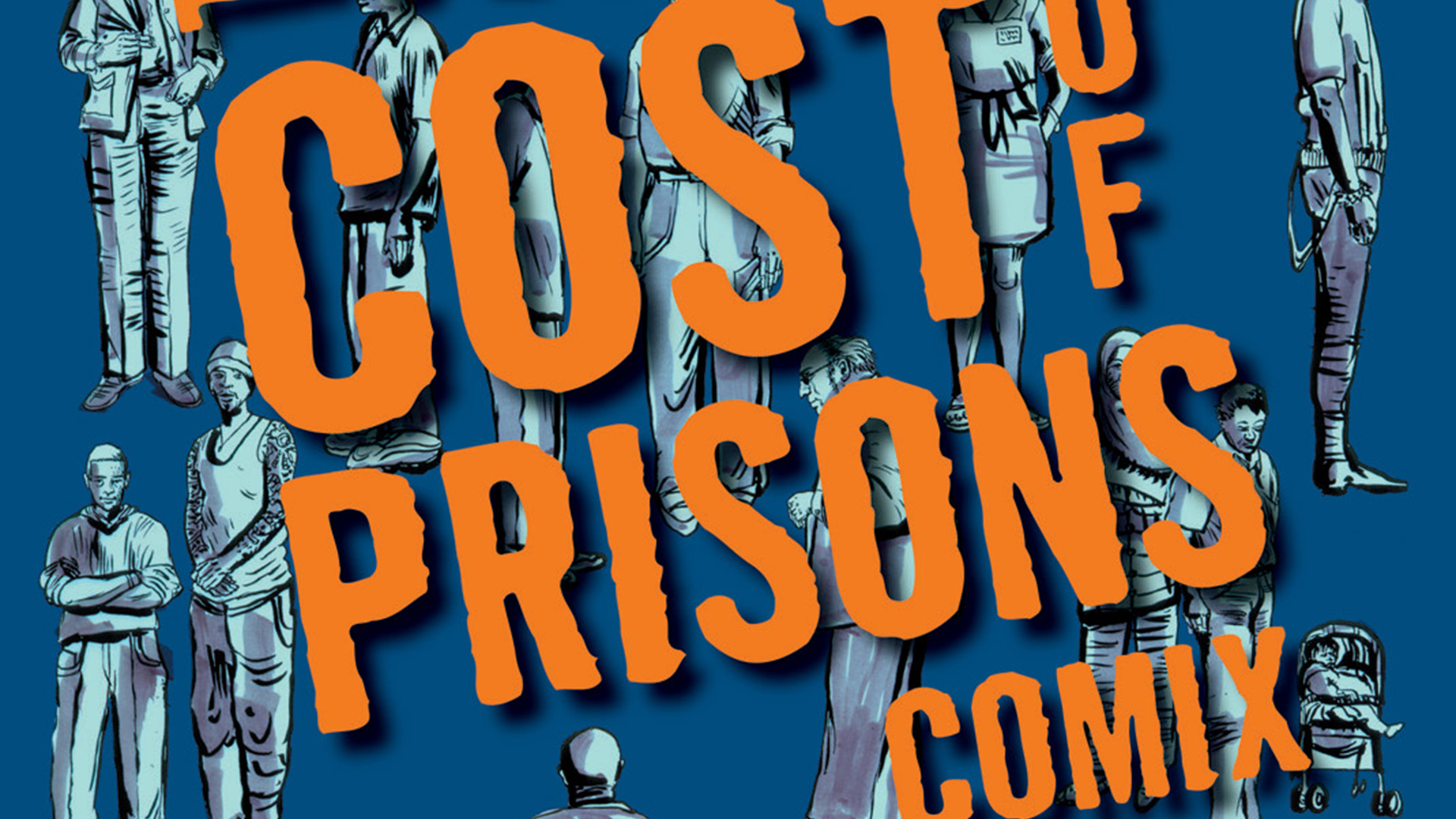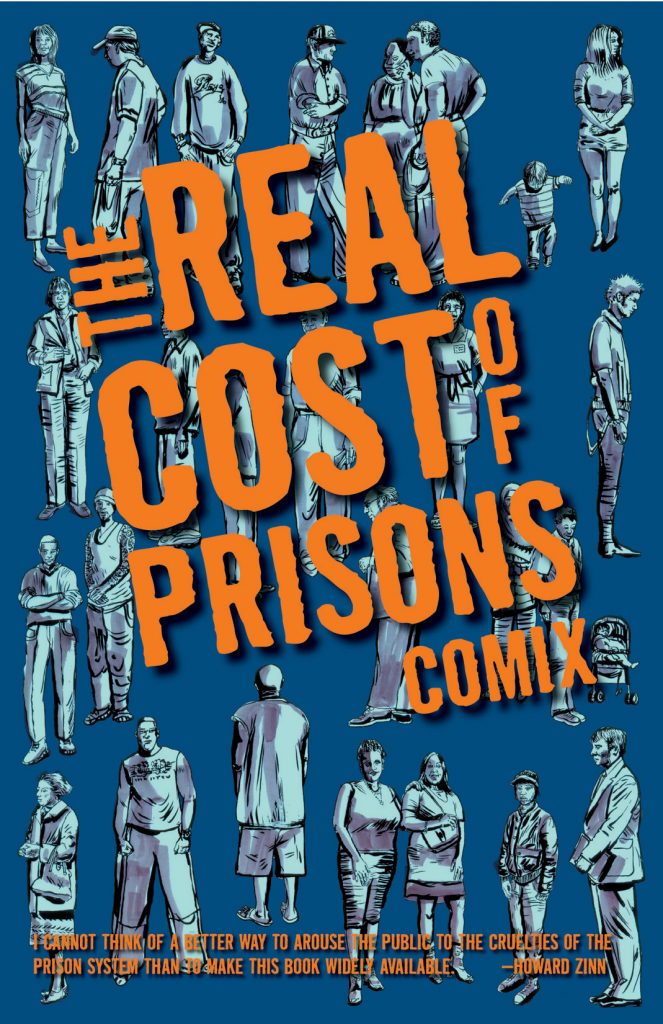By Ruth Kovacs
Street Roots, Portland, Oregon
March 13, 2009
“From the Desk of Ruth Kovacs”
Last week I spoke to a group of prisoners about the power of truth. After a lengthy discourse about the importance of truth, and that it empowers us to become a part of the oneness of man, and I have had to discern the untruths from the truth, I concluded by offering a way to search for truth. Of course I listed free-press papers such as Street Roots, free-speech radio such as KBOO, and the many books written by conscientious research journalists – including a few books I’ve reviewed in this column.
Clearly I’m not the only one searching for truth. Another significant contributor is Hans Bennett, an independent multimedia journalist www.insubordination.blogspot.com and co-founder of Journalists for Mumia (www.abu-jamal-news.com). You will find reviews of “Abolition Now,” The Real Cost of Prison Comix (part of the Real Costs of Prisons Project), Let Freedom Ring, and more – plus numerous articles worth reading. So if you are searching for insight on the criminal justice system, check out Hans Bennett.
The new book The Real Cost of Prisons Comix reprints three comic books published as part of the Real Costs of Prisons Project, which began in 2000. So far, 125,000 comic books have been printed, with more than 100,000 distributed free to community groups and college classes. Featuring artwork by Kevin Pyle, Sabrina Jones and Susan Willmarth, all three comic books can be freely downloaded at www.realcostofprisons.org. Prison abolitionists Ruth Wilson Gilmore and Craig Gilmore write in the book’s introduction that the value of the “Real Cost of Prisons Project” “has been to show us how the system of mass incarceration permeates our lives, who is paying the costs of that system and the many ways the system is vulnerable to people who put their thought and effort into organizing to shrink it.” Significantly, the comics “demonstrate that the ideas we need to change the world can be explained simply enough and packaged attractively enough to be used by all kinds of readers.” Prisoners and their families can “understand material usually circulated only among academics and those who focus on policy.”
Editor Lois Ahrens writes that “a central goal of the comic books is to politicize, not pathologize.” She argues that the “deregulation and globalization” of the last 30 years has “resulted in impoverishing urban economies, limiting opportunities for meaningful work and slashing funding for quality education, marginalizing the poor, and creating more inequality. The comic books place individual experience in this context and challenge a central message of neo-liberal ideology: the myth that people can pull themselves up by their own bootstraps. In this paradigm, racism, sexism, classism and economic inequality are not part of the picture. Most people now believe that change happens through personal transformation rather than political struggle and change.”
The recent growth of the prison industrial complex and mass incarceration is staggering. Ahrens writes that “every year from 1947 through the beginning of the 1970s, approximately 200,000 people were incarcerated in the U.S. Today, there are more than 2.3 million men and women incarcerated, with more than 5 million more on parole and probation.”
The Prison Town
comic book debunks the myth that building a new prison actually helps
to revitalize a town with an ailing economy, and instead illustrates the
many negative costs that a new prison can impose. Importantly, Prison Town
also documents how many towns learned by example and cited the prisons’
negative impact in successful campaigns to stop prison construction in
their community.
Prisoners of the War on Drugs is a heart-wrenching
look at the victims of the so-called “war.” At least according to its
official purpose, the war on drugs has been a total failure, resulting
in the mass incarceration of non-violent drug offenders at a huge,
inefficient expense to tax-payers. Prisoners emphasizes “harm reduction”
and treatment as a better solution, stating that the “war on drugs
locks up more users than dealers. Most want to quit but can’t. A year of
treatment costs much less than a year of incarceration, plus: the
person can work, pay taxes and take part in family life.” While drug
laws may seem insane, they appear to have unofficial motives that are
highly rational. For example, they have served to accelerate mass
imprisonment, the criminalization of poverty and the erosion of civil
liberties.
Prisoners of a Hard Life: Women & Their Children
concludes the three-comic book series. The stories presented here are
mostly fictional but are based on the writers’ research and personal
experience working with women prisoners. Therefore, Ahrens explains that
the stories “represent the lives of hundreds of thousands of people
suffering as a result of the war on drugs.” Perhaps most outrageous is
the true story of Regina McKnight, the first woman in the U.S. to be
convicted of murder because of behavior while pregnant. When McKnight’s
baby was delivered stillborn and an autopsy found traces of cocaine in
the fetus, she was arrested and convicted of murder, with a 20-year
sentence. In 2008, following several appeals and eight years in prison,
the South Carolina Supreme Court unanimously reversed her conviction,
after concluding that there is no medical evidence of cocaine causing
stillbirths.
Bennett concludes his recent reviews with the following
comment: “Above all, these highly-recommended books argue that
prison-related issues are inseparable from racism, classism, sexism, and
all oppression, so the more we know about prisons, the better informed
multi-issue activist strategies will be. They conclude that in working
to abolish all oppression, we must also work to abolish the prison
industrial complex and free all political prisoners.”
The next book that Hans and I will be encouraging you to read, to be released April 24, is Jailhouse Lawyers by Mumia Abu-Jamal. And so the beat goes on.
Keep searching, by reading and listening.







